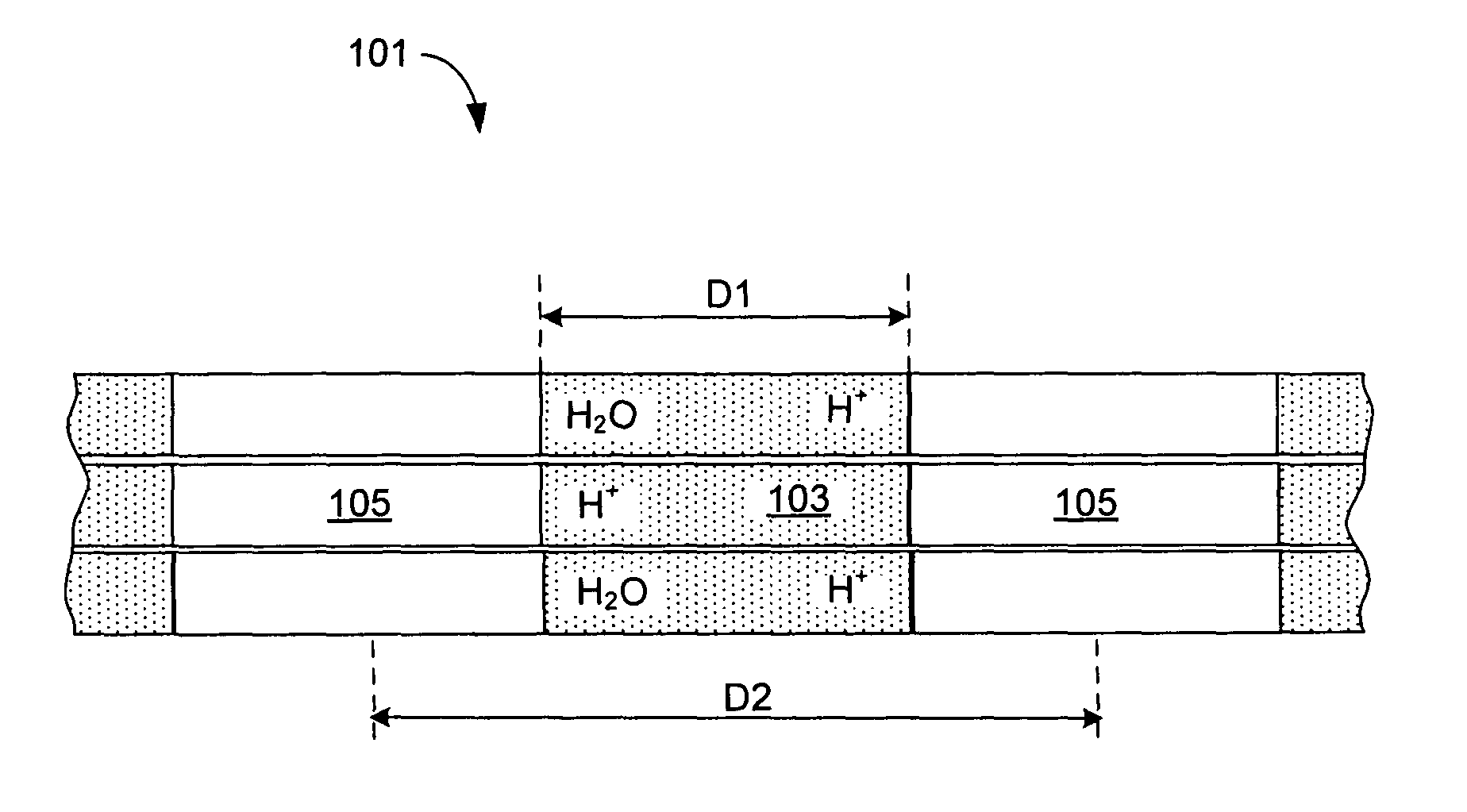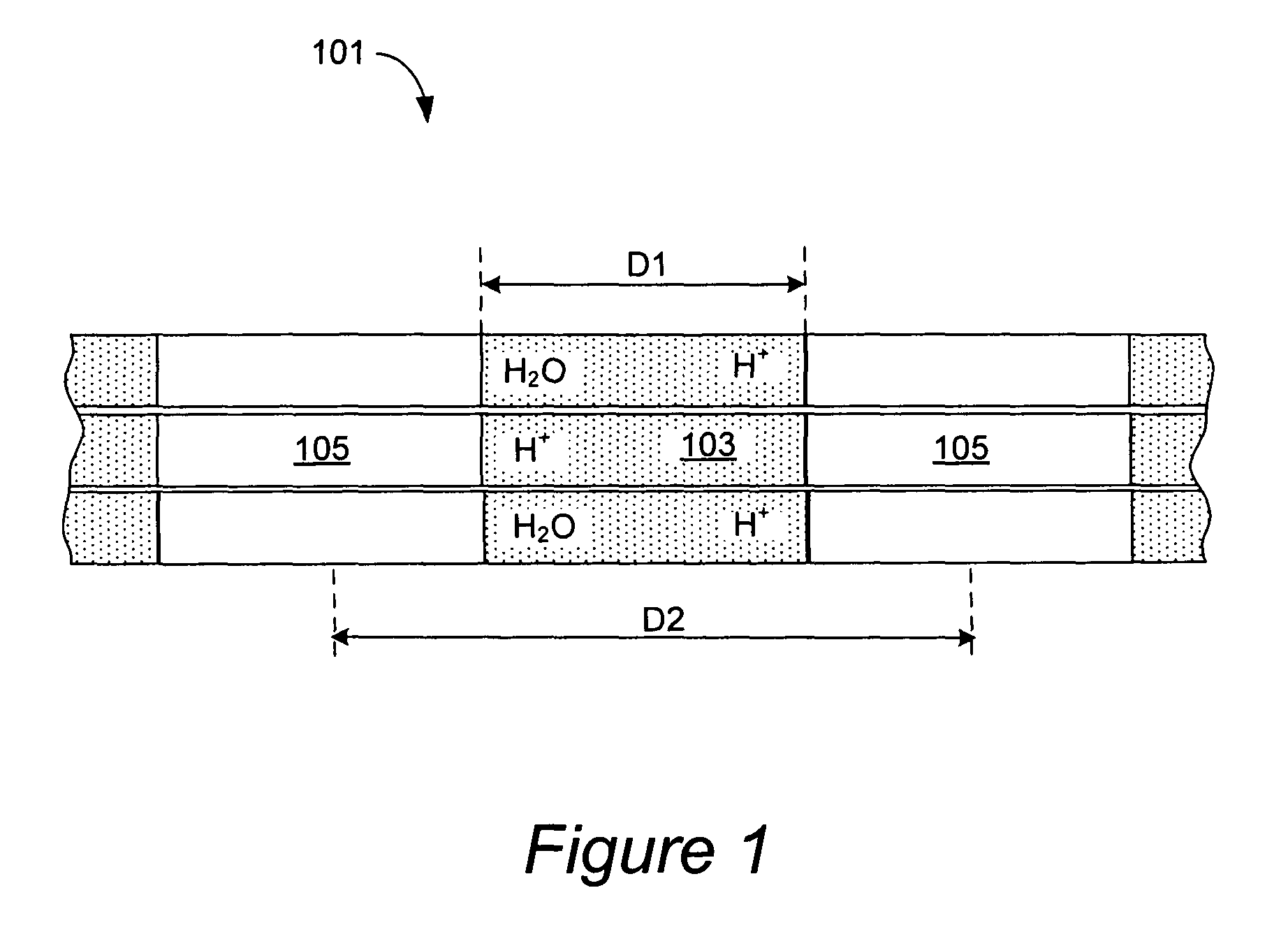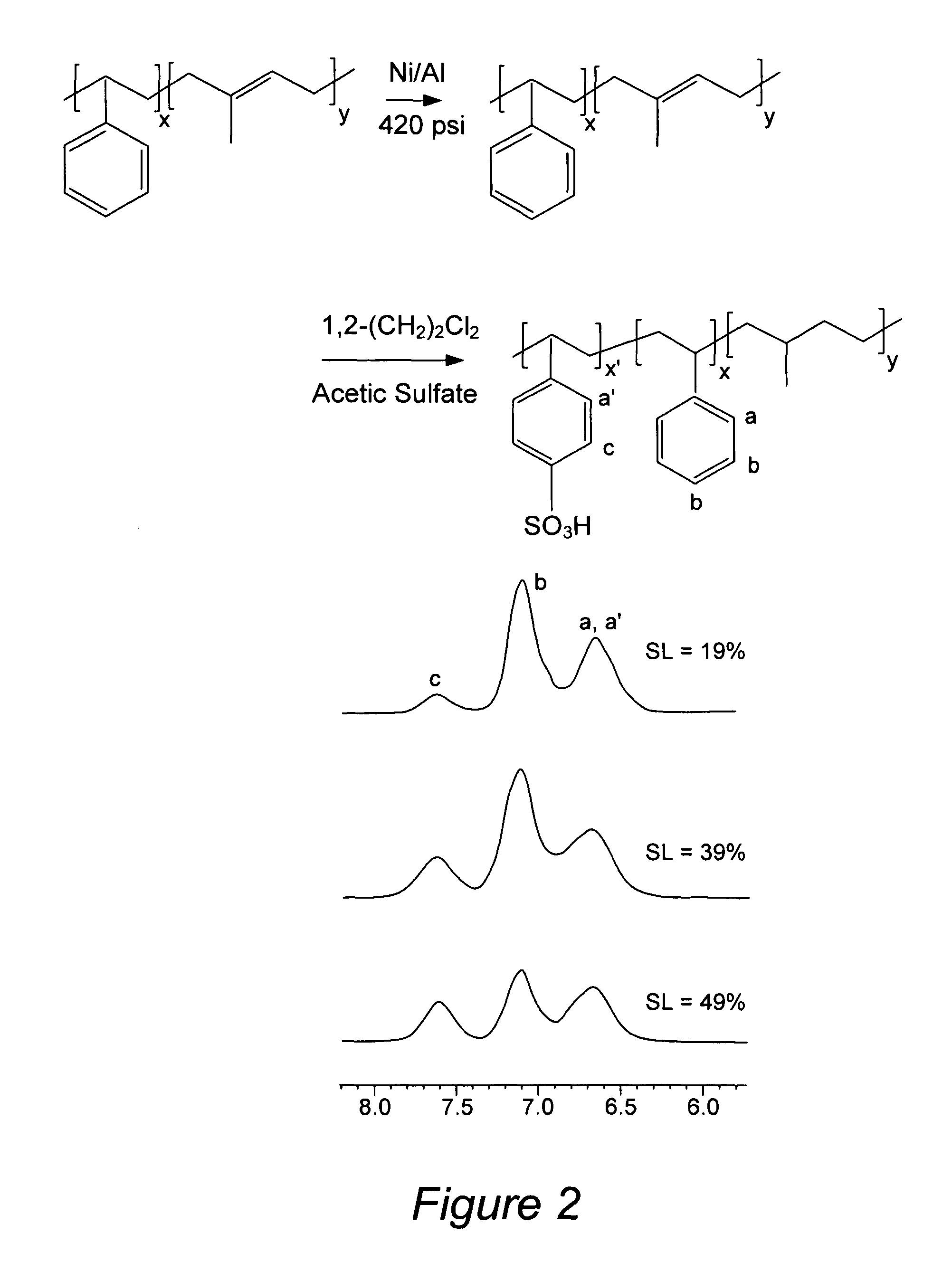Nanostructured polymer membranes for proton conduction
a polymer membrane and proton conduction technology, applied in the field of polymer electrolyte membranes, can solve the problems of high rh, difficult operation at high rh, and water loss, and achieve the effect of increasing the efficiency of pefcs
- Summary
- Abstract
- Description
- Claims
- Application Information
AI Technical Summary
Benefits of technology
Problems solved by technology
Method used
Image
Examples
experimental details ii
[0155]This section provides example experimental conditions for the methods used to characterize humidity-induced and temperature-induced phase transitions described in section II. These experimental details are similar but are not always identical to experimental conditions, provided in Experimental Details I section.
Polymer Synthesis and Characterization:
[0156]A polystyrene-polyisoprene block copolymer with polydispersity index of 1.03 was synthesized and characterized using methods described previously. Selective hydrogenation of the polyisoprene block was conducted in the presence of a homogeneous Ni—Al catalyst with cyclohexane as the solvent, using a 2 L Parr batch reactor at 83° C. and 420 psi, following previously described procedures. The hydrogenation reaction was repeated about 4 times until no detectable diene group was obtained in the 1H Nuclear Magnetic Resonance (NMR in d6-acetone) spectrum of the polymer. All of the NMR experiments were conducted on a 500 MHz Bruker ...
PUM
| Property | Measurement | Unit |
|---|---|---|
| width | aaaaa | aaaaa |
| width | aaaaa | aaaaa |
| width | aaaaa | aaaaa |
Abstract
Description
Claims
Application Information
 Login to View More
Login to View More - R&D
- Intellectual Property
- Life Sciences
- Materials
- Tech Scout
- Unparalleled Data Quality
- Higher Quality Content
- 60% Fewer Hallucinations
Browse by: Latest US Patents, China's latest patents, Technical Efficacy Thesaurus, Application Domain, Technology Topic, Popular Technical Reports.
© 2025 PatSnap. All rights reserved.Legal|Privacy policy|Modern Slavery Act Transparency Statement|Sitemap|About US| Contact US: help@patsnap.com



